Introduction
The cutest Japanese drama is here! Follow the first year of an arranged marriage between two strangers in 1936 Japan. As the manga creator stated, “They’re (fairly) inexperienced in house matters as well as in the affairs of men and women, and begin their life as a couple in the highest degree of purity!”
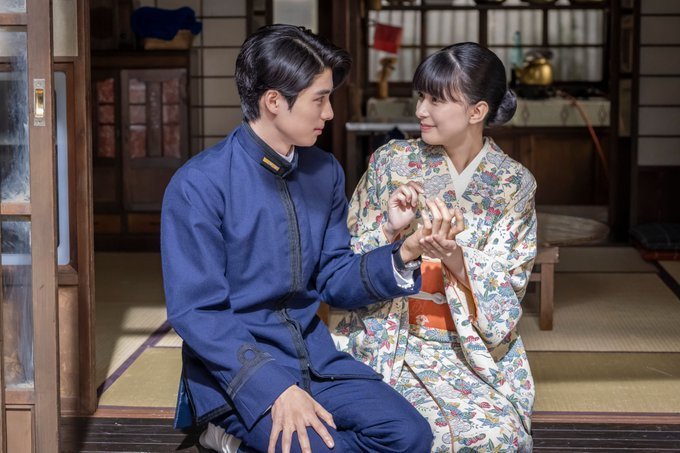
Drama Info
Drama title: Nami Uraraka ni, Meoto Biyori (Native title: 波うららかに、めおと日和 )
Alternative title: A Calm Sea and Beautiful Days with You
Genres: Historical, Romance
Aired: Apr 24, 2025 - Jun 26, 2025
Episodes: 10 | Duration: 54 minutes
Director: Hirano Shin ( 平野眞 )
Screenwriter: Izumisawa Yoko ( 泉澤陽子 )
Adapted from the manga series "Nami Uraraka ni, Meoto Biyori" (波うららかにめおと日和) by Nishiga Hachi (西香はち).
Where to read the manga: Mangadex
Where to watch: Viki and Oshiroen (fansub)
Trailer: Viki
Original Soundtrack
夢中 (“Muchuu”) by Be:First
The drama has a fun upbeat theme song. “Muchuu” means “absorbed in,” “immersed in,” “crazy about,” or “obsessed with”.
Synopsis
In 1936, Natsumi Sekiya, the third daughter of her family, is suddenly told by her father she will marry Takimasa Ebata, an imperial navy officer. However, she’s never met him before – and doesn’t even see him at their wedding ceremony, as he’s unable to attend due to his training schedule. When they finally meet for the first time, they struggle to connect due to his shy, stoic personality, but gradually grow to understand each other (Source: Viki).
Characters
Main Characters
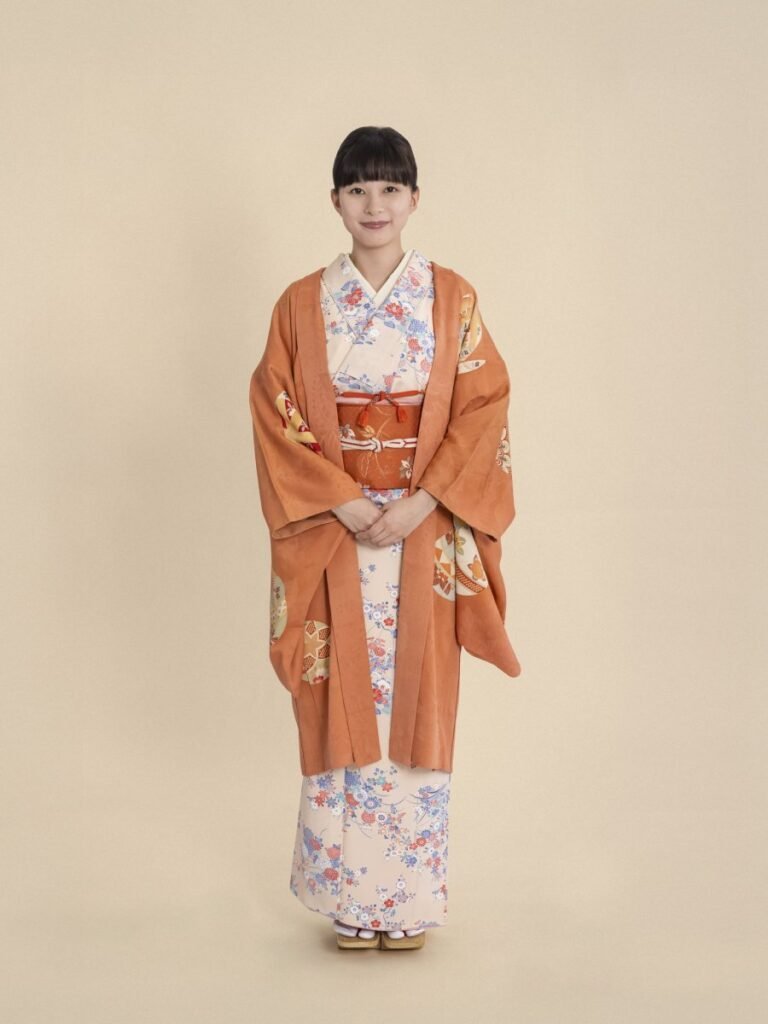
Yoshine Kyoko ( 芳根京子 ) as Ebata Natsumi
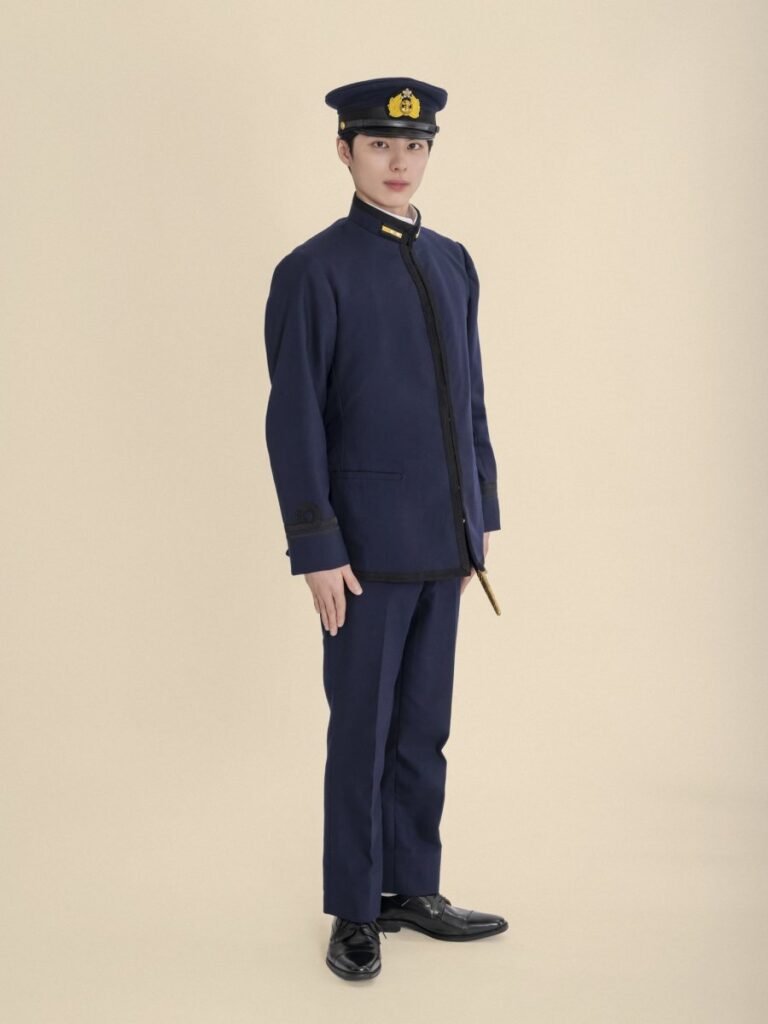
Honda Kyoya ( 本田響矢 ) as Ebata Takimasa
Supporting Characters
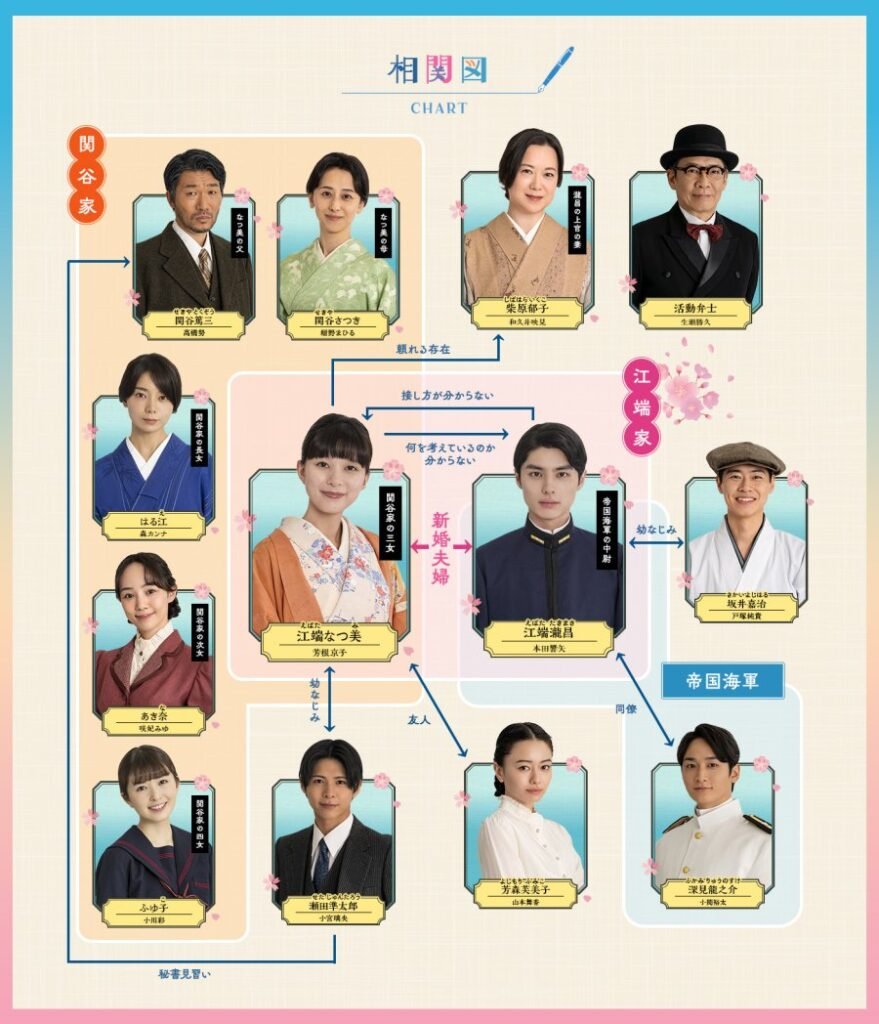
Clockwise, from top left:
- Sekiya Tokuzo (Takahashi Tsutomu) – Natsumi’s father
- Sekiya Tatsuki (Konno Mahiru) – Natsumi’s mother
- Shibahara Ikuko (Wakui Emi) – Takimasa’s adopted mother
- Narrator (Namase Katsuhisa)
- Sakai Yoshiharu (Tozuka Junki) – Takimasa’s old friend/ohagi’s seller
- Fukami Ryonosuke (Koseki Yuta) – Takimasa’s colleague – Second Male Lead
- Yoshimori Fumiko (Yamamoto Maika) – Natsumi’s friend – Second Female Lead
- Seta Juntaro (Komiya Rio) – Natsumi’s childhood friend
- Sekiya Fuyuko (Ogawa Aya) – Natsumi’s younger sister
- Sekiya Akina (Sakihi Miyu) – Natsumi’s second sister
- Sekiya Harue (Mori Kanna) – Natsumi’s eldest sister
Review: Why You Should Watch This Drama
Reason 1: It’s lighthearted and heartwarming
The native title of this drama, 波うららかに、めおと日和, literally translates to “The waves are gentle, perfect weather for a couple.” The plot reflects the title. The story is pure and refreshing, like a sea breeze. It’s lighthearted and heartwarming; there is no storm or turmoil. Everything rides smoothly for the couple. There are a few misunderstandings here and there that are solved quickly, but mostly because one doesn’t know the other party. However, once a certain misunderstanding is cleared up, they put trust in each other.
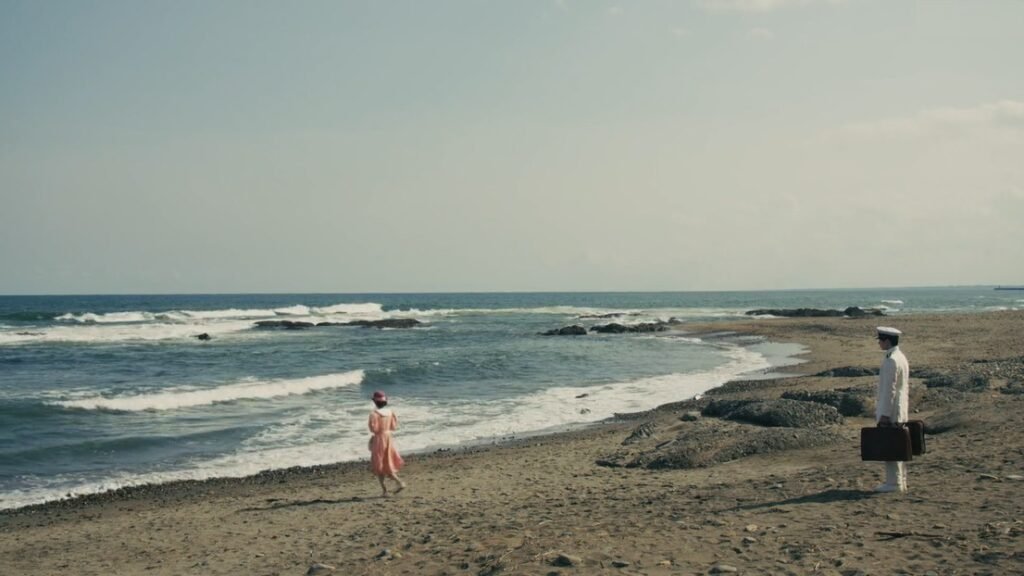
Takimasa and Natsumi on their honeymoon. “The waves are gentle, perfect weather for a couple”
People will notice that this time period of this historical romance is 1936-1937 which falls in the early Showa Era (1926-1945). This is a period was marked by militarism, expansionist policies, and ultimately, Japan’s involvement in World War II. The early Showa era saw the rise of ultra-nationalism and the country’s descent into war, culminating in the devastating bombings of Hiroshima and Nagasaki. However, the show doesn’t show military activities neither war preparations. The Male Lead’s workplace only show some coworker interactions in the breakrooms as well as a few minor incidents. If you’re looking for a dramatic romance during the war theme, this is not it.
Because this drama is light and fluffy, it’s perfect if you’re looking for an escape, positive emotions, and/or a break from stressful and serious real-life situations. This drama offers a comforting and enjoyable experience, featuring a charming storyline and numerous feel-good moments that can boost your mood.
This drama is also recommended for those new to Japanese dramas (dorama) or for introducing someone to the genres; it is also family-friendly, without violence, mature themes, or inappropriate content. Besides romance, this drama explores family relationships, personal growth, and relatable challenges, making it suitable for viewers of all ages.
Reason 2: The hilarious and adorable Female Lead
The Female Lead is the draw of this drama. Ebata Natsumi is naive and adorable. She is innocent, kind, clueless, and clumsy (especially with married life), but also endearing and lovable. She is genuinely sweet and optimistic, which sometimes leads to comedic situations or heartwarming interactions. She’s not a dumb Female Lead, but rather resourceful and communicative.
Although this type of female lead is a common character archetype in dramas, the leading actress, Yoshine Kyoko, brought the manga character Ebata Natsumi to life in a charming way with her funny facial expressions.
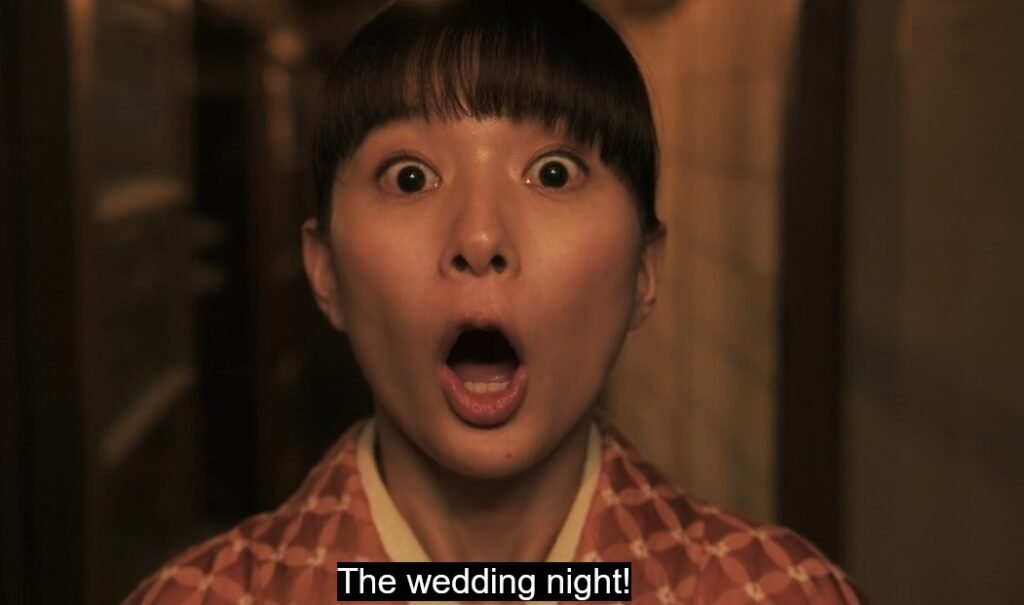
The only thing that I think is quite illogical for the Female Lead is the lack of sex education she received, considering that she has a mother and two older married sisters. When she got married, she was practically sent to the groom’s place with no knowledge of the husband-and-wife relationship. All she knows is how to take care of household stuff, as she usually does at home. Moreover, the only character who teaches and helps her with married life is Takimasa’s adopted mother, not her mother or sisters.
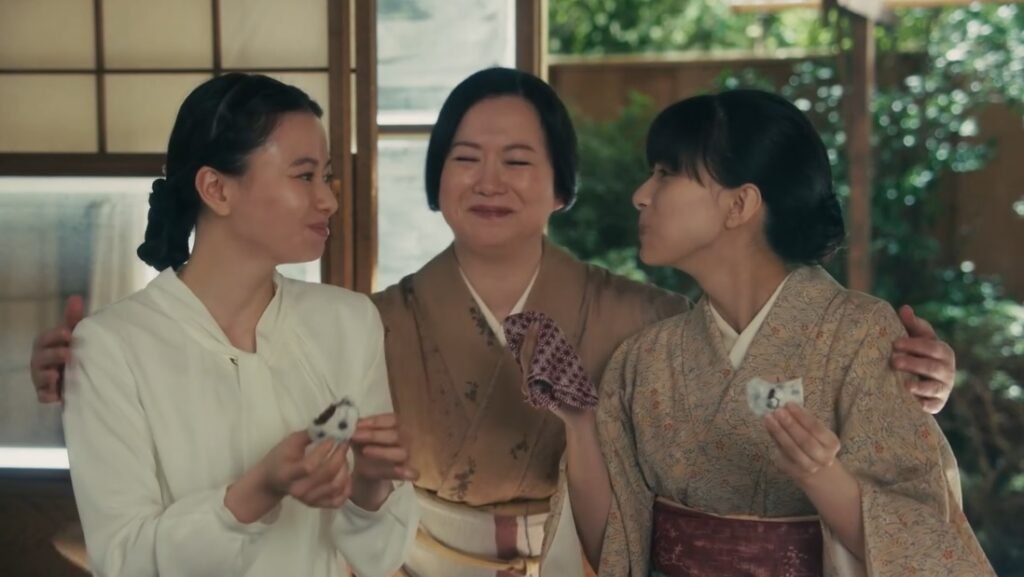
Shibahara Ikuko (center), Takimasa’s supportive adopted mother
Reason 3: The sweet and innocent main couple
Before I describe the main couple’s interaction, it’s not fair if I don’t describe the Male Lead. At first, Takimasa appears cold and stern, especially since the leading actor, Honda Kyoka, has thick eyebrows that can be perceived as creating a stern or even angry expression. However, soon the audience will discover that Takimasa is quiet, shy, socially awkward, and innocent. He’s also honest and caring towards his wife.
The culprit that makes the marital relationship seem distant is Takimasa’s naval job that requires him to leave for weeks or months. Luckily, these long separations don’t drag in the drama with prolonged longing and loneliness. We only see the time jump notifications, for example, “two months later,” and most drama scenes are their awkward but cute reunions. However, both Takimasa and Natsumi always look forward to meeting each other again, as well as positive farewells full of trust and hope.
When they reunite, their days are mostly filled with slice-of-life-type interactions between husband and wife. If they don’t show us their cute mundane life, there are also some interesting events in which they get involved. For example, they disguise themselves to follow the secondary couple on their first date, as shown below.
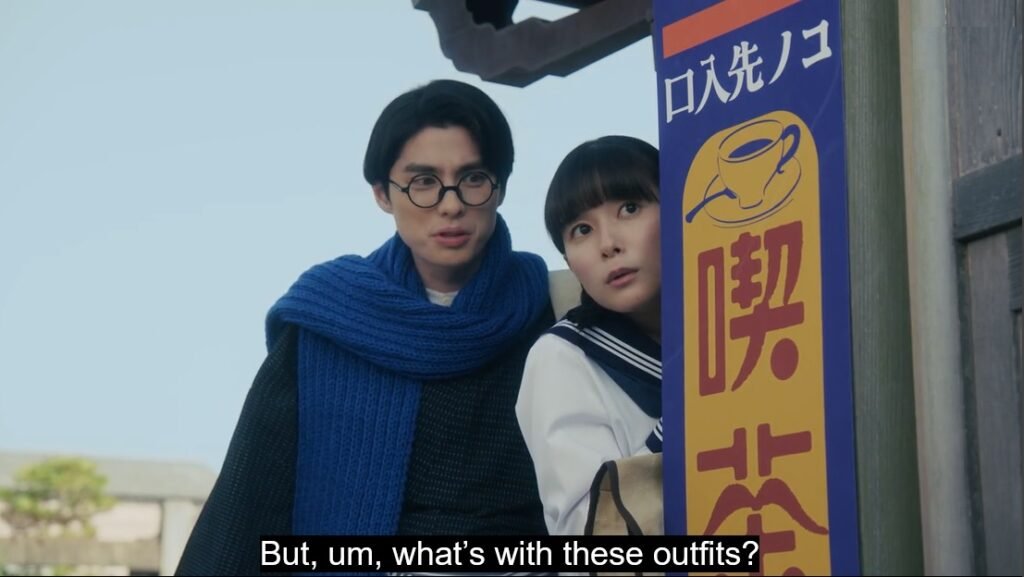
Reason 4: The sophisticated secondary couple
Although this drama only has ten episodes, it manages to complement the main couple with the secondary couple: Fukami Ryunosuke and Yoshimori Fumiko. Ryunosuke is Takimasa’s colleague and friend, and Fumiko is Natsumi’s friend. Fumiko and Natsumi met at the naval officers’ wives gathering, and Fumiko helped her aunt, who was the host of the gathering. Ryunosuke and Fumiko met when he took the drunk Takimasa home while she was with Natsumi, who was sick. Of course, this creates tension between those two who threw barbs to defend their respective friends.
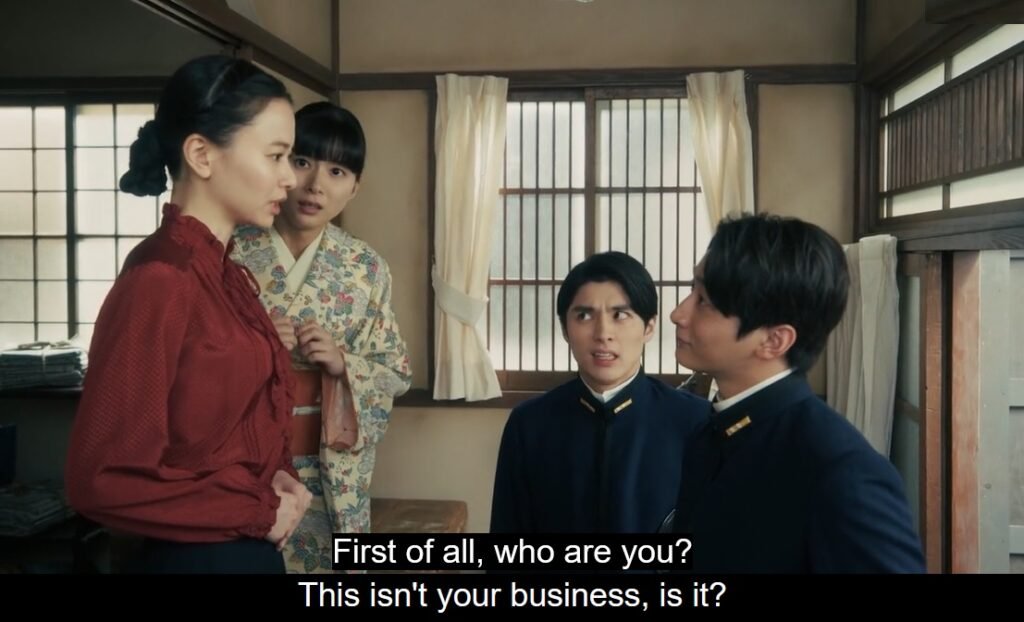
This secondary couple provides a different perspective on love and relationships. Ryunosuke and Fumiko are both confident and cynical. He is a ladies’ man but very cynical of the attention from women who chase him because he is from a rich family. Fumiko is a serious and unrelenting young woman who has a broad mind and modern thinking. Their showcase alternative relationship dynamics with a different type of romantic challenge than the main couple’s.
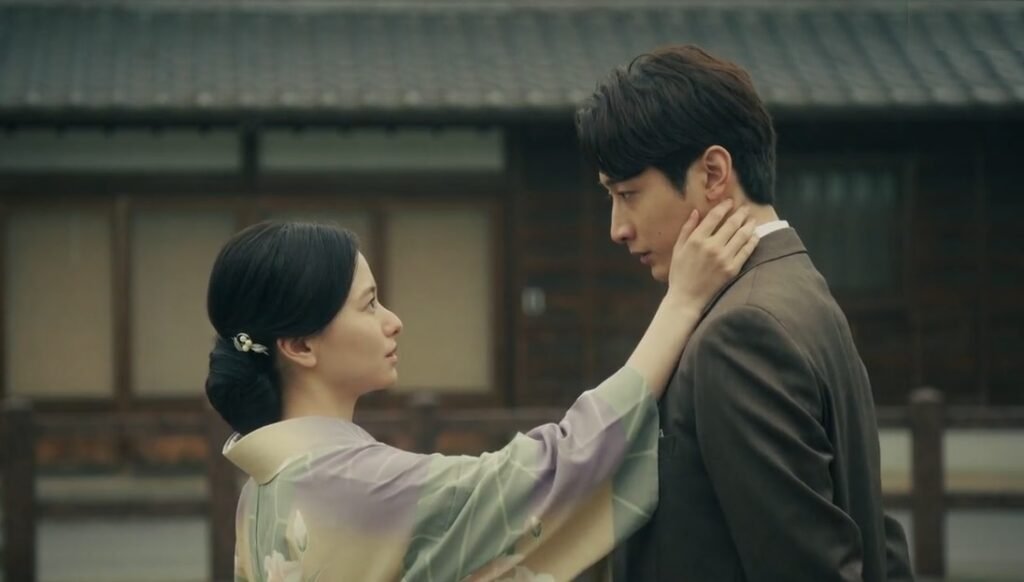
Reason 5: The entire supporting cast is nice
Seriously, there is no despicable person in this drama, no mean in-laws, destructive love interest, or demanding boss. We saw Mrs. Shibahara, Takimasa’s adopted mother. The Shibaharas don’t have children, and they adopted Takimasa, who lost his parents at the age of 14. In my opinion, Shibahara Ikuko is a very sweet and supportive mother-in-law, who is even more attentive than Natsumi’s own mother.
The kids are very cute, too. Natsumi has twin nieces who like to say things in unison. Fumiko’s younger brother and sister are also like her; they speak their minds and are observant.
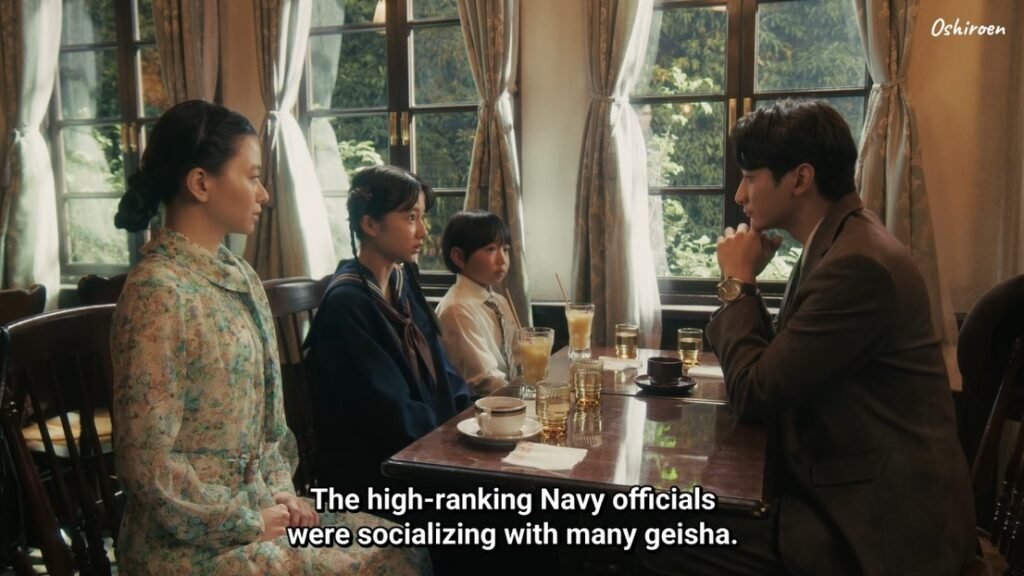
The Fumiko’s siblings interrogated their prospective brother-in-law
Reason 6: Witty and comical narrator
When the narrator first came into the scene, I thought he would only explain the historical custom and terminologies used during the Showa era. However, he not only enhances storytelling, provides context, and guides the audience’s understanding, but he even throws some funny comments on the action itself.
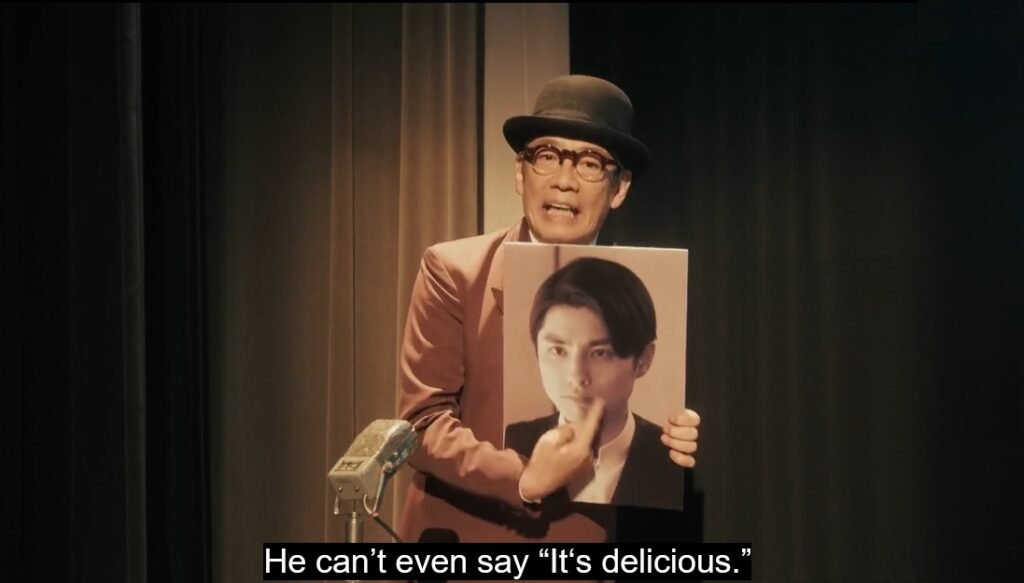
Reason 7: Beautiful kimonos and moga
Most of the time, when we watch Japanese dramas, the characters wear kimonos on special occasions and at cultural events as a significant part of Japanese culture. We love seeing them, as kimonos are known for their intricate designs, vibrant colors, and elegant lines.
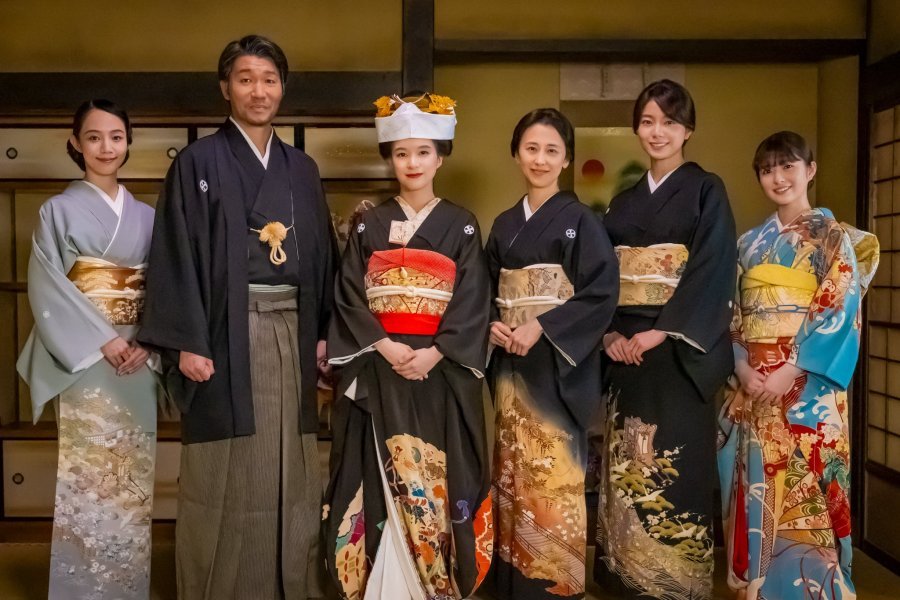
The Sekiya family wore beautiful kimonos at the wedding
Because this drama is set in 1936, the characters mostly wear kimonos. They also wear western-style clothing. I also love to see the white naval uniforms. But most of all, I was introduced by the narrator to the word “moga.” Moga is shortened from modern girls (モダンガール, modan gāru), the Japanese women who followed Westernized fashions and lifestyles in the period after World War I. Mrs. Shibahara encourages Natsumi, who always wears kimonos, to wear cute western-style dresses.
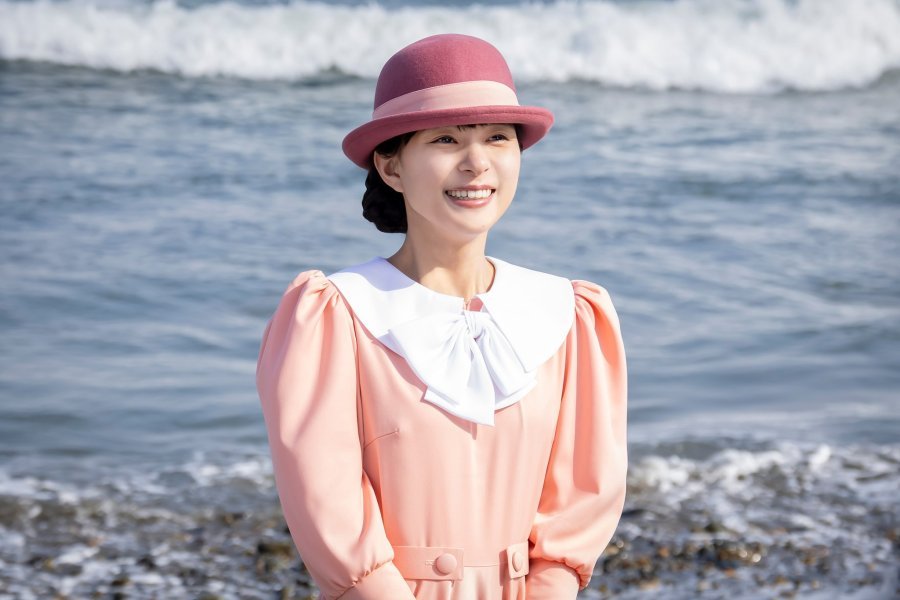
The first moga dress Natsumi wore made Takimasa shocked, especially when he saw her revealing legs. Natsumi: “If it’s you, then… I… I don’t mind being seen.”
Mostly, the cinematography and special effects produced adequate representation of the naval set and the historical setting of the era. My only complaint is the big fake moon and the sea visual effect that is supposed to enhance their romantic scene during their honeymoon.
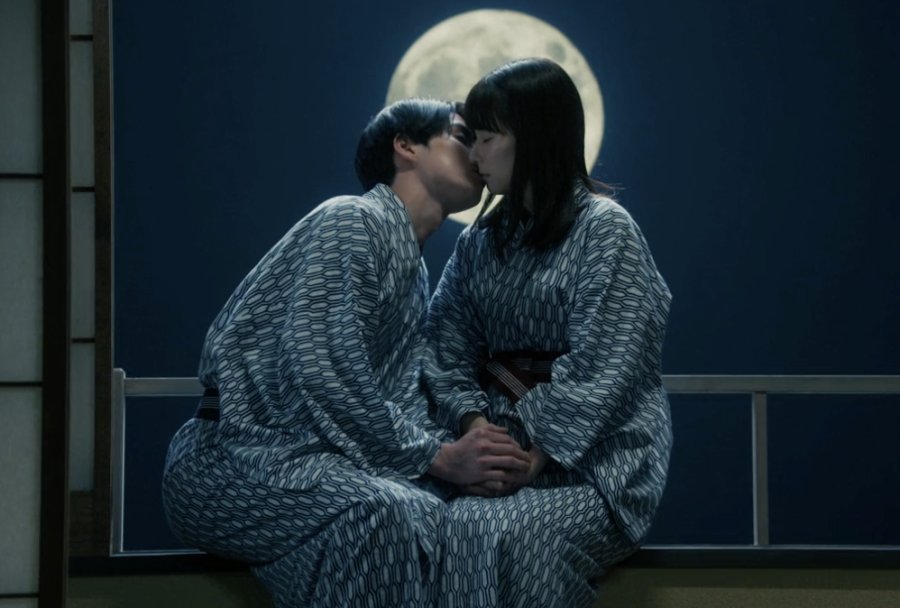
Conclusion
In conclusion, Nami Uraraka ni, Meoto Biyori is a simple romantic slice-of-life drama, but it was so lovely and soothing. In the end, the narrator doesn’t forget to mention that “Even though this era had the looming presence of war, there was till a period of peace…”. “Perhaps… because they were feeling the signs of war… the small joy of daily life shone with a sparkling brilliance.” The narrator ends the drama with:
"Everyone... your small joys of everyday life...
are you properly cherishing them?"



